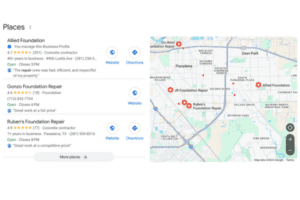As more and more companies shift to working from home, we have been asked quite often for tips on the transition, both from the business owners and the employees. In this blog, I’ll speak to both types.
I began working from home around a year ago and still remember the transition quite well. I am someone who, in the grand scheme of things, is still new to remote employment – therefore, I’ve recently gone through the trials and tribulations many people are currently experiencing.
My husband, who has been working from home for about eight years, has a little more experience and wholeheartedly agrees with these tips as well – as they’re best practices that helped him early on too.
Before we continue, I’ll answer the burning question everyone asks us: “Don’t you get sick of each other when you both work from home?” And the answer is no. Believe it or not, we hardly see each other all day! We are both very busy with our jobs, have separate offices, and since we both follow what I’m about to tell you, well, you’ll see.
Beginner Tips for Working from Home
- Get Dressed. You might immediately think, “I get to work in my pajamas!” – but be careful, it’s a slippery slope. For some people, this may be perfectly fine, and you may work just as well in whatever you wish (my supervisor is like this, she can work in anything anywhere). But the act of getting showered, dressed and ready helps train your brain that this is for real. You’re starting a workday just like any other.Sure, later on when you’re more experienced, you’ll find this may be less required. But when starting out and transitioning to this new way of working – it’s definitely recommended.
- Have a Set Workspace. While you can broaden your horizons later, it helps to start yourself out in a set work area. While not everyone has an actual office, even a designated area, like a table as your workstation will suffice.That is your virtual office . Let it be known to other members of your household that they should not bother you while you’re in your workspace, especially if you have kids at home. You should make sure it is being treated just like it would if you were at work in a separate building. It also helps you keep a separation between work and personal life – after all, your house is your personal space.
- Follow Your Set Hours. If your office hours are 8 am to 5 pm, be at your workstation ready to work at 8 am. (And check in! We’ll talk about that later). But it’s not just about siding with your work life here – it goes the other way too. Finish at 5. It’s very easy to just stay working, since it’s only a hop, skip and jump from your home life, you may have the tendency to stay in your workspace longer if you lose track of time. I know, some of you are laughing, thinking, “I count down the minutes! What do you mean lose track of time!?”, but I promise you, when you’re working from the comfort of your home, it will happen.I’m somewhat of a workaholic myself (plus, I love what I do!), and I used to have the tendency to finish my day, go eat dinner, then come back to my office and finish something. I learned quickly that if I didn’t adhere to a schedule, I’d burn myself out.
Don’t get me wrong, there’s times where you want or need to work late to finish a project, and that’s ok – you likely would have done the same thing at your actual office. Just be conscious of it.
- Practice Self-Discipline: It’s easy when you’re on your own to deviate from your work – especially since nobody is “watching”. It may start as one thing here and there… “Let me just run to the grocery store real quick”, “Watching this tv show won’t hurt anything”.But if you wouldn’t do it at your company’s office, don’t do it at home. Again – slippery slope! Start work when you’d start it, take breaks when you normally would and for the length of time you would, and finish your day when you normally would.
- Keep Communication Open: If there’s something that’s easy to forget about, it’s that line of communication. Talk to your co-workers just like you would at the office. It’s ok to do. Keep that socialization constant.If you’re the one running the company, make sure your employees know that they can still contact you whenever they need and should check-in when they first get to work, when they’re taking breaks/lunch, and when they’re leaving for the day. There’s many digital services that can help you in keeping the line of communication open, which I’ll talk about next.
Remote Tools for Business Owners
If you’re the company owner, you may be here looking for some helpful tools for you and your employees. Here are the latest and greatest in remote working tools that we highly recommend:
- Aircall: A great phone software for use right on the computer. When you receive an incoming call, it can be transferred to co-workers either directly, or you can speak to them first. You can even assign tasks to yourself and others based on phone calls!
- Teamwork: Great for prioritizing tasks, seeing what your team has upcoming, assigning duties and communicating what needs to be done. My boss says, if it isn’t in Teamwork – it didn’t happen. Teamwork is my work bible.
- G-Suite: Not just for email, but being able to share calendars, have unlimited drive storage, Hangouts Chat and Hangouts Meet video conferencing, spreadsheets and word processing, shared notes, forms, and so much more. A definite one-stop suite of products perfect for remote staff.
Above all, believe me, you will have a great time working from home if you can follow the basic tips and have the drive to make it work for you. And always remember – you’re setting the bar for future possibilities – remote work is both cost-effective for the company, and a perk for the employee!















